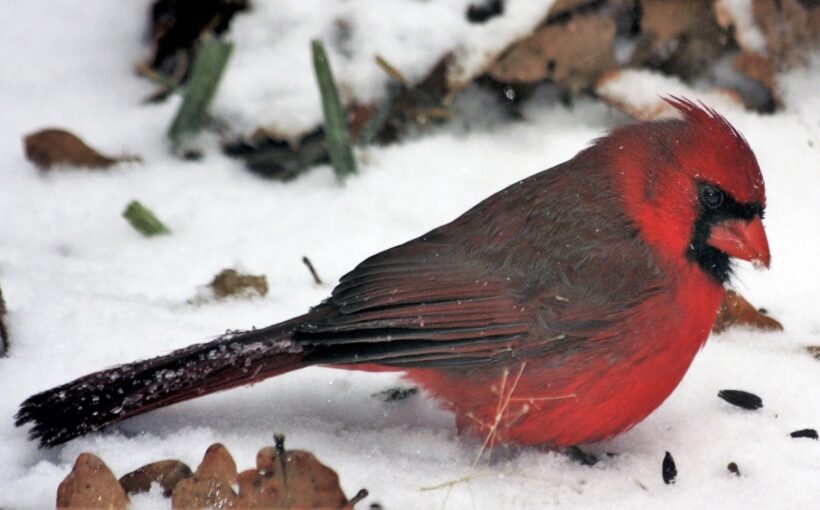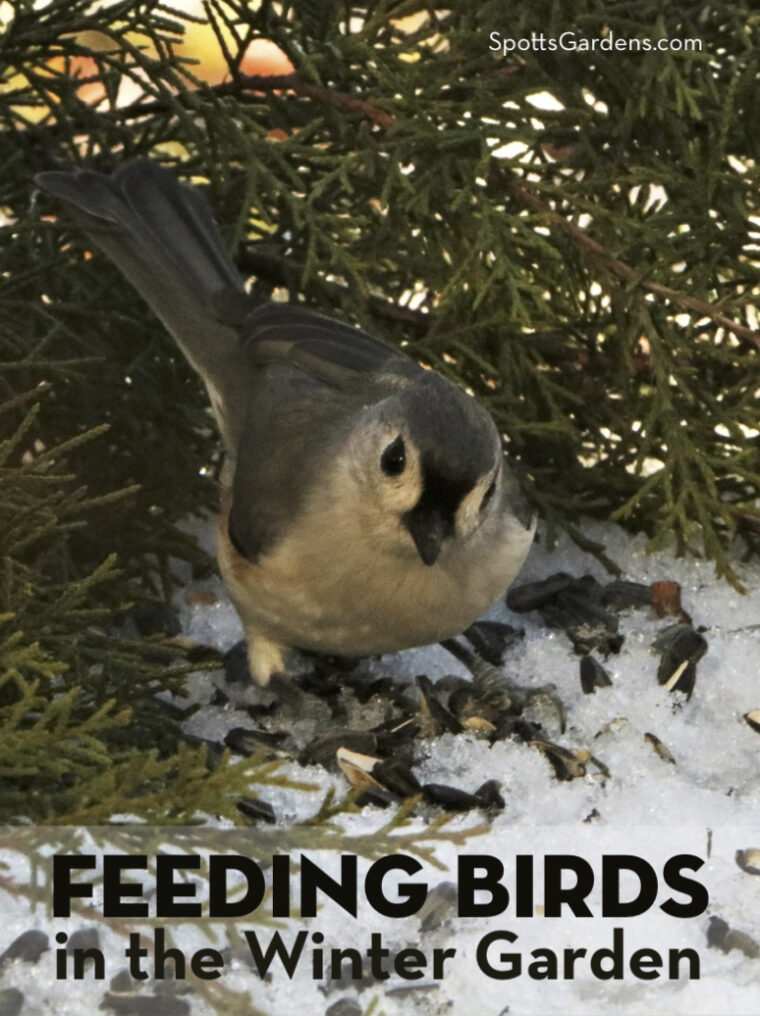Draw feathered visitors to your garden by feeding birds this winter. A wide variety of plants mixed with a few human-provided supplements can make your garden a bird haven in winter—and the rest of the year too!
Plant berries.
Loads of native Indiana shrubs provide berries that persist into the winter, ideal for feeding birds that feast on fruit. Our favorites include winterberry (Ilex verticillata), arrowwood viburnum (Viburnum dentatum), nannyberry (Viburnum lentago), and chokeberry (Aronia spp.). Our native red-twig dogwood (Cornus sericea) produces high-fat berries and brilliant stems that stand out in the winter garden.
Evergreens like holly (Ilex x meserveae), juniper (Juniperus spp.), and yew (Taxus spp.), are another source of winter food for fruit-loving visitors. Rose hips are a high-energy food, too.
Leave your grasses and perennials up.
As part of a wildlife-friendly fall garden cleanup, we leave as many perennials and grasses standing as we can. Seedheads from plants like coneflower (Echinacea purpurea) and black-eyed Susan (Rudbeckia fulgida) provide winter food for birds. Insects overwinter in the hollow stems of many plants, too.
Ornamental grasses not only provide food to seed-eating birds, they make good cover. We love the form and movement they bring to the winter garden.
Provide water.
Use a birdbath that won’t crack due to freezing temps; try a metal or plastic bowl rather than ceramic. Refill with warm water on freezing days, or use a bird-bath deicer to keep your bath from freezing over.
Be sure to scrub out your birdbath regularly to prevent disease.
Make a brush pile.
Instead of hauling all your old sticks away, find a corner where you can leave them piled up. They’ll provide shelter for birds as well as for the insects those birds can eat.
Supplement with bird feeders.
Do some research to determine which kinds of birds you’d like to feed. A mix of seed and suet feeders will attract a range of birds to your garden; be sure to clean them regularly.
Join a bird count.
The Audubon Society’s Christmas Bird Count relies on citizen scientists to head out one day between December 14 and January 5 to count and record the birds in their area. It’s the longest-running wildlife survey. Put it on your calendar for next winter!
The Great Backyard Bird Count is an easy and fun count available to birders of all ages and experience levels. You can complete it in as little as 15 minutes or as long as you want! In 2024, the dates are February 16 to 19.

